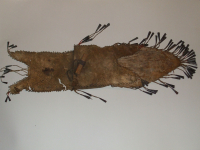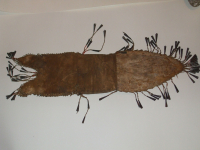pouch
pouch
pouch
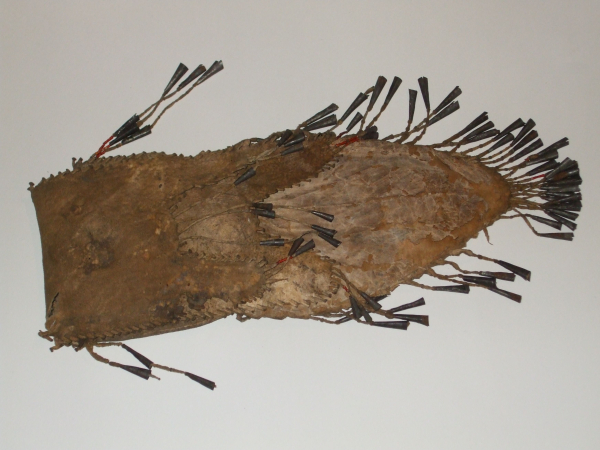

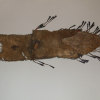
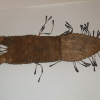
A Great Lakes pouch made of hide with fringes wrapped with dyed porcupine quills and terminating with metal cones. Collected by G.C. Beltrami in Wisconsin in 1823. Around 1856, Beltrami's nephew donated several objects, including this one, to the Civic Library of Bergamo. Later the collection was transferred to the Museo Civico di Scienze Naturali, its current location.
Museum documentation
Read More About This Relative
tanned hide; porcupine quills, dyed red; metal: tin; sinew; wood
The pouch is edged with a fringe, decorated quill-wrapping and terminating in metal or tin tinkle cones.
Vigorelli in the Beltrami s Collection Catalogue sates that this object was used as a bag for tobacco (p. 63)
Provenance
Collected by G.C. Beltrami from Wisconsin in 1823. Beltrami's collection catalogue states that around 1856, Beltrami's nephew donated several objects to the Civic Library of Bergamo, and later transferred to the Museo Civico di Scienze Naturali.
The Beltrami Collection was exhibited in Florence in 1929 during the "Prima Esposizione Nazionale di Storia delle Scienze" (First National Exposition of History of Sciences"). In 1973, during a celebration of the Beltrami exhibit, Glauco Luchetti donated three objects from his own collection, which were located in Beltrami's last house in Filottrano, to the "Museo Civico E. Caffi". In 1987 the collection was used in the exhibit entitled "Missisippi 1823. Oggetti indiani raccolti da G. Costantino Beltrami" in the Galleria Lorenzelli in Bergamo.
Beltrami s catalogue. Vigorelli, Gli Oggetti indiani raccolti da G.Costantino Beltrami (p.63).
Leonardo Vigorelli, Gli Oggetti indiani raccolti da G.Costantino Beltrami, Civico Museo E. Caffi, Bergamo, 1987.
About This GRASAC Record
This record was created by Emanuela Rossi after a trip funded by GRASAC to the Museo Civico E. Caffi in Bergamo, Italy in October 2008.
Researcher present: Emanuela Rossi.













In the Beltrami Collection Catalogue, the author, Leonardo Vigorelli, defines "Upper Mississippi" as the Cultural Area of Origin. He defines "Northeast" as the Geographic Area.
 Knowledge Sharing Platform
Knowledge Sharing Platform


